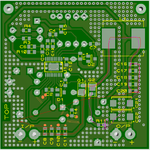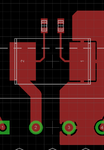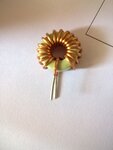KlausST
Advanced Member level 7
Hi,
Sorry here was a misunderstanding.
You:
I meant GND plane on one side.
But components and other signal on the other side.
So: double sided pcb, but gnd plane only on one side.
****
On your pcb it seems a lot of parts are connected on one side only. C16, C17...C22 for example.
Klaus
Sorry here was a misunderstanding.
You:
Me:with ground plane on both sides,
single sided GND plane is sufficient
I meant GND plane on one side.
But components and other signal on the other side.
So: double sided pcb, but gnd plane only on one side.
****
On your pcb it seems a lot of parts are connected on one side only. C16, C17...C22 for example.
Klaus









